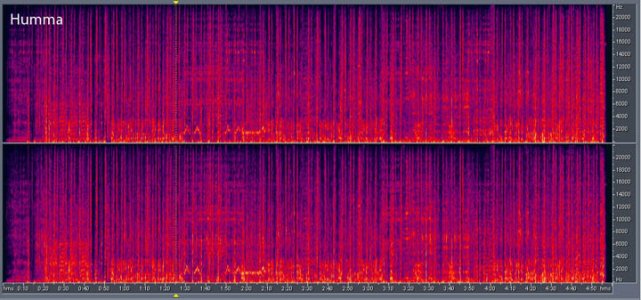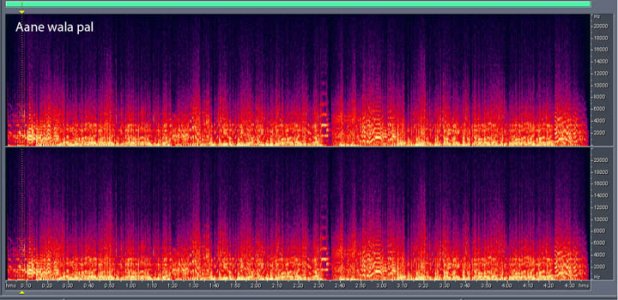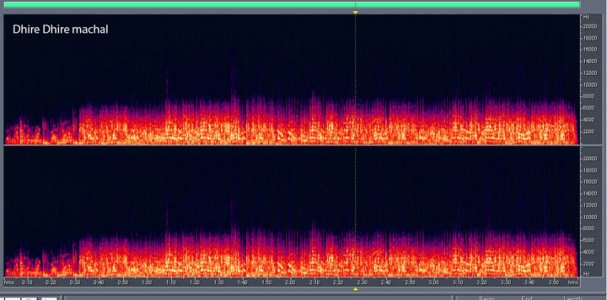What Prem said earlier is true, the master for the CD is different from the master for the vinyl, and is different from the master for the cassette, etc, etc. And most important, the content is re-mastered by each streaming service. So the Spotify master and the Tidal master for the same album are different. Each streaming service licenses the content from the original music publisher, but is permitted to re-master to suit the "sound" they want to deliver, based on their understanding of their audience's taste and their audience's audio equipment and listening habits. (For instance, if I thought that most of my customers were teenagers listening on earphones while travelling on noisy mass transport, I would do dynamic range compression, amplify the lows and highs, and do some other tweaks.)
Note that what I am saying is that each mastering is different. I am not saying that vinyl mastering is better. I am not saying that vinyl mastering is not compressed. In fact, for any album produced in the 21st century, other some very very special audiophile labels, one can be sure that the original recording, mixing, and all post-processing has been done digitally. This means that your vinyl is an analog rendition of digital content. So, there is no point in saying "vinyl" is better" or "analog is better" unless you have one or two samples of those very very rare audiophile labels who do end-to-end analog chains. Even there, you wouldn't know how to do a fair comparison between vinyl and digital, because the same audiophile label would master differently for their own vinyl and their own CD (and their own SACD -- that's why SACD "sounds so much better" than CD). So, you or I as outsiders have absolutely no way to do an apples-to-apples comparison between different media, because no publishing house has ever published exactly the same master tapes on different media. This is not cheating or fraud -- this is simply good engineering. Different media need to be mastered for differently.
Now for the third point: that vinyl is not compressed, but CD is. This is not true, at various levels. Let's take them one by one.
First: the vinyl cutting process requires a lot of music to be compressed. This is specially true of modern studio recordings which are recorded on electronics which have far higher dynamic range than the recording equipment used when records were invented. So, the electronics can record with 90+ dB of dynamic range easily, whereas the extreme dynamic range of vinyl is an absolute max of about 80 dB, if very well produced. Normal "very well produced vinyl" is 70dB or less. So, the engineer wants to compress the dynamic range somewhat, to ensure that you can hear the soft passages clearly and the loud passages don't clip your amp.
Second: the vinyl cutting process can't handle deep bass as loud as digital media, even ordinary CD, can. With vinyl, either the bass should not be too deep (no going to 20Hz) or should not be too loud. If the cutting engr doesn't take care about this, the stylus can literally jump off the groove with very deep, very loud bass. This wasn't a problem with vinyl 50 years ago when the only really deep, loud bass was from church organs, but with modern digital music, a lot of bass is simply added as synthesized data -- and this can be 20Hz or even lower, and can be as loud as the digital bits will allow. So, in short, the music has to be re-mastered for reducing the LF as needed before vinyl can be produced.
Third: the record label has some idea what kind of turntables, cartridges, and speakers their customers will listen on, and based on that, they'll remaster their music to sound good for their customer. If they're publishing a string quartet (western classical) or Norah Jones, they'll cut highs and lows a bit, emphasise the mids and the strings. And they'll expect their customers to have a music system costing at least a few lakhs to really enjoy that sort of music. If they're publishing Eminem, they'll expect people to use Victrola or Crosley in dorm rooms and dance to that music at full volume, so the midbass will be emphasised, treble boosted, and who cares about vocals in such music anyway? So, in short, the music will be re-mastered and compressed for vinyl.
I don't know whether this is convincing for you, but I'm 100% convinced that good engineers who know their job do re-mastering for vinyl and often compress their music to make it sound good on vinyl.
Only the digital media have no such engg limitations. You can put full amplitude 18Hz bass into your CD, and your CD will have no problem. (Your speakers might.) Therefore, if I am a record producer producing music for the highest-end audiophile, and I want to put every bit of the original music into the medium with the lowest distortion, I'd always choose digital media. First choice: SACD. Second: CD. The analog media all have media constraints. Please don't believe that vinyl music is "never compressed".
Of course, there could be some albums whose vinyl are produced very well and sound awesome, and their CD releases were mastered for boomboxes and sound horrible. Totally possible. Prem will know. If this happens, it is not a comment on the media, but the mastering.




